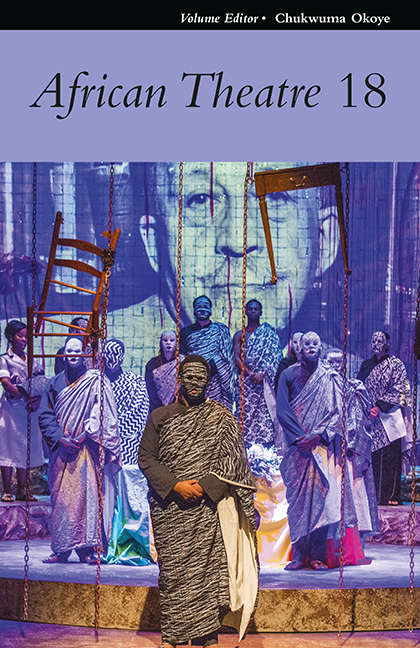Performing the Nation Incorporating Cultural Performances into Theatre in Ethiopia
Published online by Cambridge University Press: 02 April 2020
Summary
Introduction
Theatre in Ethiopia started at the beginning of the twentieth century. Its development has been almost exclusive to the capital city, Addis Ababa. The city is home to five theatres that each stage different shows most of the days in a week. Bejerond Tekelehawaryat Teklemaryam, a man who studied in Russia and travelled in Europe at the beginning of twentieth century, introduced a European form of drama with his first play, Fabula Ye Awerewoch Comedia (Fable: The Comedy of Animals) in 1921 (Aboneh 2012: 1). Theatre has played a significant role in reflecting Ethiopian culture, politics and social life across the timespan of three consecutive political regimes from the 1920s. Even though many early plays were written incorporating cultural performance forms, they all, in terms of content, focused on moralistic and religious issues. After the 1960s, with the dominance of a small group of Western-trained playwrights, Ethiopian theatre saw the exclusion of indigenous performance forms on the professional stage and largely followed European realist concepts of playwriting. Despite the dominance of such playwriting techniques, there have been numerous endeavours to profile Ethiopian cultural performance forms in the theatres of Addis Ababa.
As in many African societies, people in Ethiopia use dance, storytelling, dialogue and role play in various social engagements. Among Orthodox Christians, yearly ceremonies like Shadey and Ashenda in Amhara and Tigray and Meskel in Guraghe, Kaffa and Wolaita have, for example, significant dramatic elements in their performances. I am arguing here that there is scope for melding indigenous performance forms more substantially with the dominant Europeanized influences on Ethiopian theatre to make more culturally engaged plays.
Few studies in English have been carried out on the potential of Ethiopian indigenous performances as a source for theatre production. The earliest and the most extensive study was done in 1996 by Jane Plastow in her book African Theatre and Politics: The Evolution of Theatre in Ethiopia, Tanzania and Zimbabwe: A Comparative Study. The book comparatively discusses the beginning and development of theatre in these three countries in relation to their political and cultural context. While deliberating on the issues of whether Africa has an indigenous theatre that can concomitantly be studied with the European form of theatre or not, excluding the European form of theatre definition, Plastow strongly argues that ‘African performance forms do not need to justify their existence.
- Type
- Chapter
- Information
- African Theatre 18 , pp. 100 - 120Publisher: Boydell & BrewerPrint publication year: 2019



